Cycling the World as a Couple
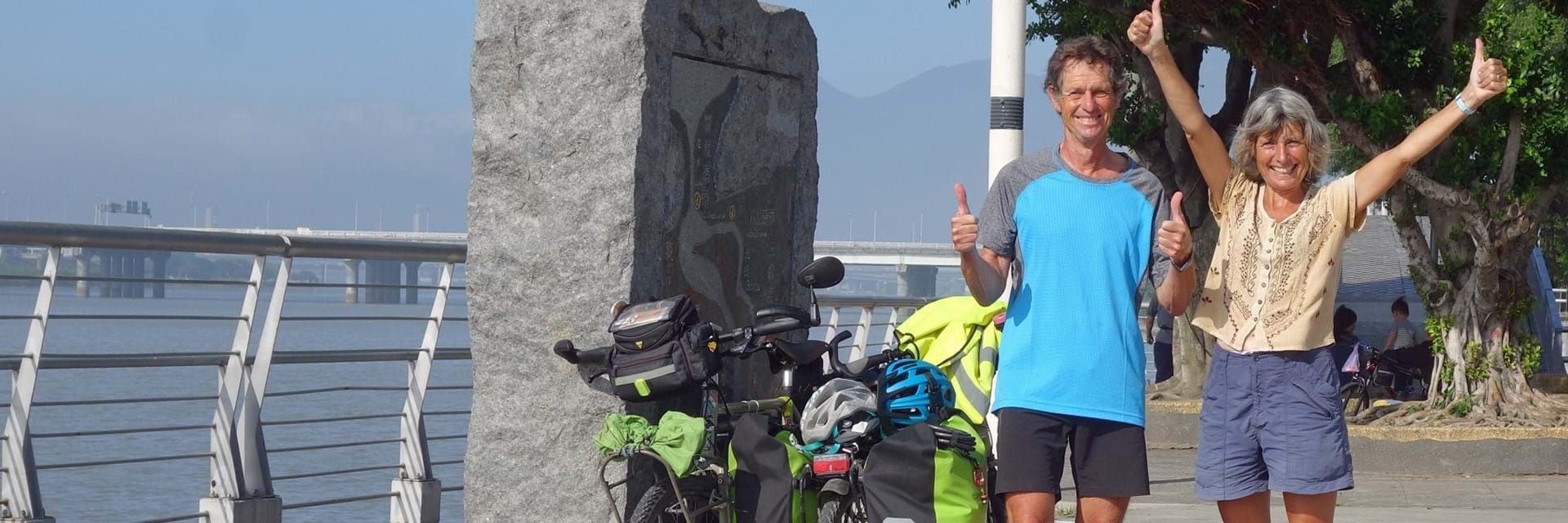
You may be dreaming of distant destinations, tropical escapes with exotic foods, pristine natural scenery and eye-opening cultures. Perhaps you yearn to discover the hidden species and secrets of a rainforest, immerse yourself in small communities off the beaten track or simply kick back on a paradise beach.
There’s no better way to travel the world than by cycling. At least, that’s according to Frances and Graham Bland. Having recently celebrated their 39th wedding anniversary, Frances and Graham have travelled across a large part of the planet together and they’ve done most of this on two wheels.
From the outback of Australia to the Caribbean island of Cuba to the paradise of Sri Lanka – and that’s only the start of it. They have ridden through all sorts of terrains, encountered communities unfamiliar with tourists and experienced a retirement many can only dream of. They are now closer than ever as a couple and here, they share their story.
What inspired you to travel the world together?
Graham: I think the wish to travel was in my DNA from the outset – my favourite genre of books when I was ‘knee high to a grasshopper’ always involved distant lands and cultures, jungles or deserts, explorers etc.
I met Frances a month after I had returned from South America, bubbling with excitement and a head full of stories about the adventures I had enjoyed. We started saving for travel as soon as we were married and it took us just over a year to save enough to get going. We flew out to Pakistan and explored the globe for two or three years.
It was after a spell of work in Australia that we discovered cycling. Australia is a big, sparsely populated land and we wanted to see it all! While staying in Sydney with an Australian couple we’d met in Nepal, we asked them, “What do you think is the best way to see Australia?”
They replied, “Bus, camper, Ute … whatever, just NOT by bicycle!” (an inference to the size and wildness of the country).
That was all the discouragement we needed and within months, we had bought ourselves bicycles and panniers and were wobbling down the road at the start of our first journey on two wheels, around Australia and New Zealand.

And experiencing the wildness your friends warned you of first-hand hasn’t seemed to have deterred you! Nearly 40 years on and you’ve cycled through scores more countries. Why have you chosen to continue to travel by cycling rather than hiking, backpacking or coach tours?
Graham: We have done our fair share of backpacking, travelling on buses, trains, cars, sometimes hitchhiking – but you can’t beat exploring a country on a bicycle.
Every year, we toy with the idea of a change – “let’s go backpacking in South America”. On each occasion (so far) we think this over, remember the endless bus journeys, bouncing along rutted roads, usually with other westerners, travelling from one tourist hub to another, following the Lonely Planet’s “must see” but well-trodden routes and staying in hostels full of other backpackers, doing the same thing. On reflection, we decide to jump back on our bicycles.
The slow pace of bicycle travel suits us. On two wheels, you immerse yourself in the country and its culture. You travel with your face in the air and not behind a glass panel. You smell the manure in the fields, rather than the deodorant of fellow passengers in a tin box.
Because there are limits to the distance that your legs can take you each day, you have to visit and stay in places that don’t appear on tourist maps or in travel guides. This means that you have to interact much more with the locals. You often don’t have the option of chatting with fellow western travellers over a pizza – you have to eat the local food, which is usually better anyway, try new things and chat to locals. Don’t get me wrong, I love to share a pizza and travel yarns with fellow travellers – but not every day.
Another big plus, for us, anyway, is that being on two wheels seems to dispel cultural and economic barriers. The locals we pass often show as much interest in us and what we are doing, as we do in them and their day-to-day pursuits. We often attract onlookers who want to chat, want to practise their English, want to take selfies with us and want to share their lives with us. That does not happen when you are in a bus!
So – if you want to turn your travels into adventures, hop on your bicycle!
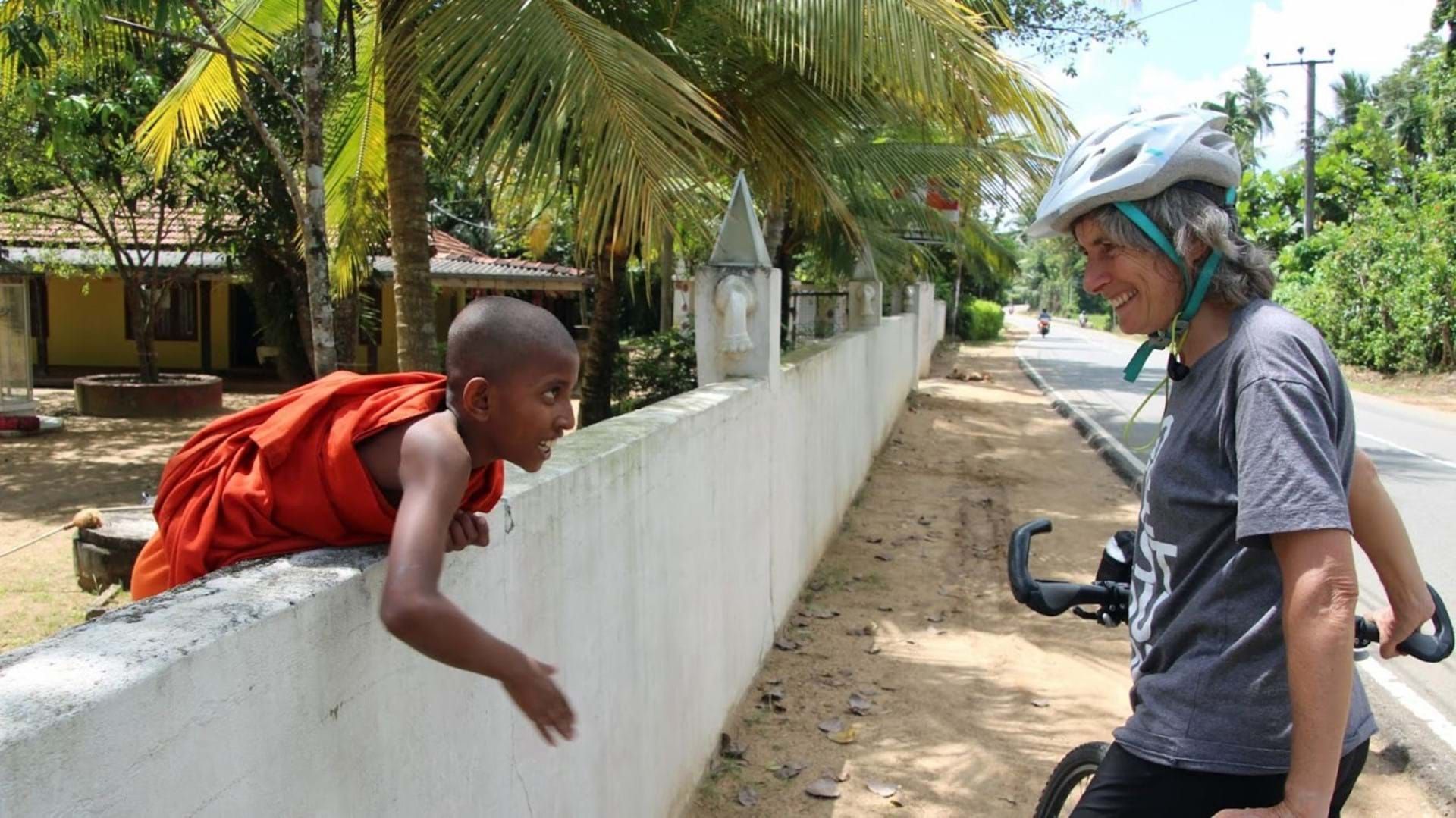
How do you find cycling abroad compares to bike rides at home?
Frances: Cycle touring is completely different to ‘going for a cycle’. Going for a cycle ride is fun, good exercise and fresh air. Cycle touring is on a completely different scale.
You wake up in a hot, foreign country, not knowing what experiences and sights the day will bring. You can’t beat cycling off at dawn through sleepy, little towns that are just waking up, watching market traders setting up their colourful stalls, children (sometimes four on a bike) making their way to school.
Then there are all the exotic smells of spices or charcoal fires, the bright luminescent green of lush paddy fields, the distinct saffron of Buddhist monks praying outside a stupa.
Every day is like a magical bike ride, where you are immersed in colour, culture and sounds.
Where have you cycled together so far?
Graham: Since we retired in 2013, we have cycled about 50,000 kilometres in around 20 different countries. And there is still so much world out there and so many places we want to go on two wheels.
We have cycled across Europe quite a few times and on these trips, we carry a tent and camping equipment. These trips have usually involved flying our bikes out somewhere and then cycling home. For example, a cheap flight to Marrakesh and cycling north up through Morocco, Spain and France to the channel ports.
Our bicycle trips elsewhere usually have a ‘journey’ element with a defined start and targeted finish, e.g., Kathmandu to Tamil Nadu or Bangkok to Singapore. On other occasions, we fly in and out of the same airport and do a big circular tour, e.g., Bangkok, through Thailand, Laos, Vietnam and Cambodia and back to Bangkok. On still other occasions, we ‘circumnavigate an island or country’. We’ve explored Taiwan, Cuba, Sri Lanka and Costa Rica this way.
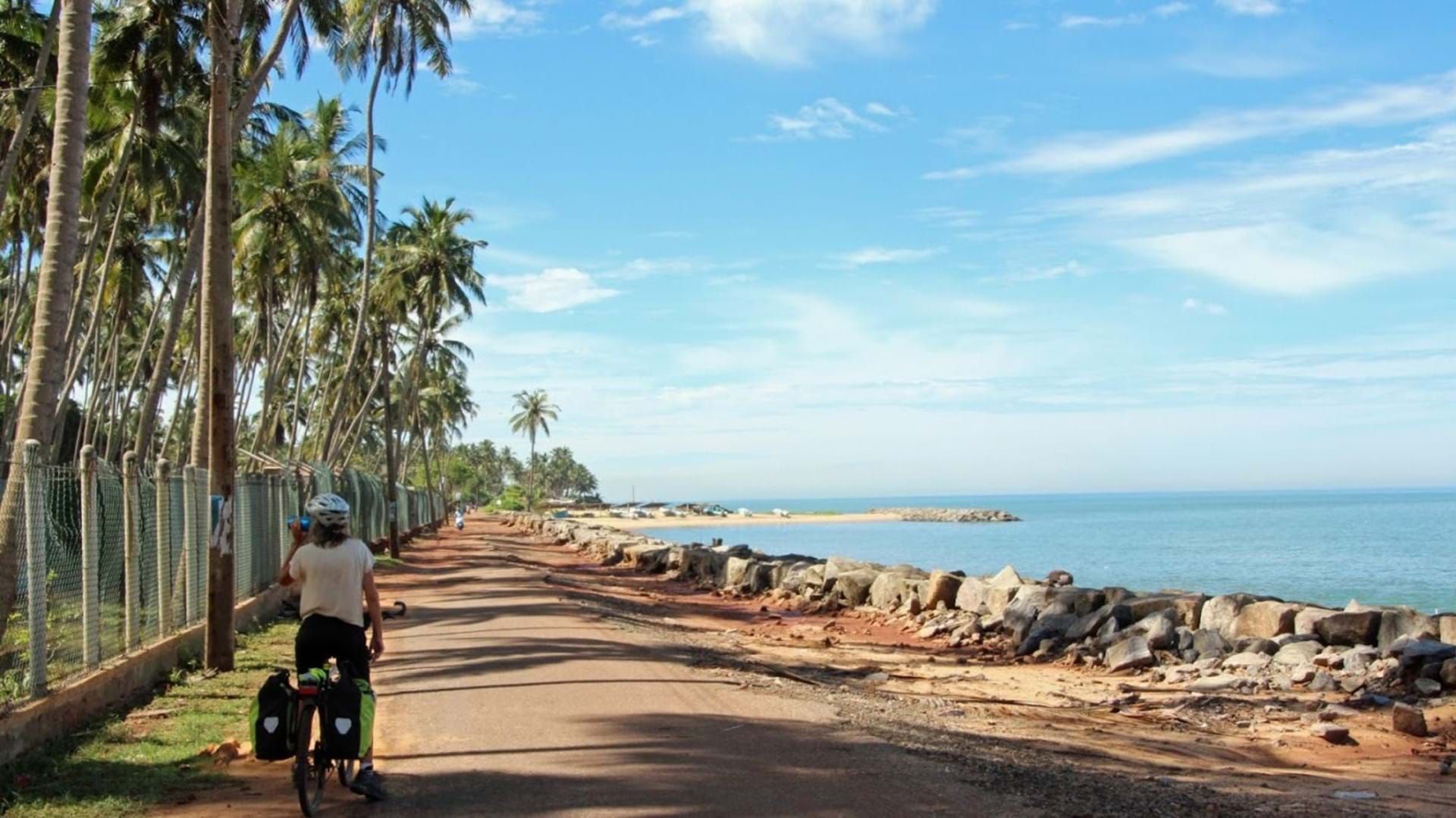
What have been the highs and the lows?
Frances: Highlights are the amazing hospitality of local people.
Cycling along one day, we stopped to check the route when a man brought us two papayas from his garden. He spoke no English and we couldn’t speak his language, there was just a lot of smiling.
While cycling along the Santiago de Compostela in Spain, a stall holder refused payment when we stopped to buy oranges in a village market.
We stopped in a tiny ramshackle restaurant in a village in Malaysia for breakfast and the owner and his daughter would not take payment.
This happened so often. It was embarrassing to accept food from people much less wealthy than us western tourists, but their culture was to show kindness and hospitality to strangers. Meeting people like this is very humbling.
Lows are unexpectedly finding ourselves on a very busy road with huge lorries belching out black smoke. Fortunately, Graham usually manged to find us a quieter route.
I remember another low in Sri Lanka. We had had a tough, hilly cycle and were looking forward to stopping. The accommodation we had booked looked beautiful away up in the hills. However, when we eventually arrived, everything was boarded up and there was no one around. We had to cycle another hour before we eventually found a rather grubby hotel.
But the highs way outnumber the lows and after a good night’s sleep, we are always refreshed and ready for another day.

How did you find cycling in Sri Lanka?
Graham: Three weeks and 800km into our Sri Lankan cycle tour, I wrote in my diary, “We might be fickle but Sri Lanka is now our favourite cycle tour”.
Having completed our 2,000-kilometre, two-month relaxed tour of this ‘Tear Drop’ island, I have no reason to amend this observation!
We started in Negombo on the West coast, close to Colombo’s airport. Our first day, cycling North to Chilaw, was a stunning, back-road cycle through picturesque and lively fishing villages. A perfect start.
Then, we headed into the hills, up to Kandy. We cycled through the highlands to Nuwara Eliya and on to Haputale – tea plantations and amazing views more than compensated for the long, steep climbs to get there!
We dropped down to the South Coast at Galle. From here, we followed the east coast, as far as possible up to the Northern tip of the island and Jaffna, then back down South along the West coast.
We didn’t stick religiously to our pre-planned route but detoured or diverted depending on conditions and whims at the time. We enjoyed 33 cycling days and 25 lazy or cultural days.
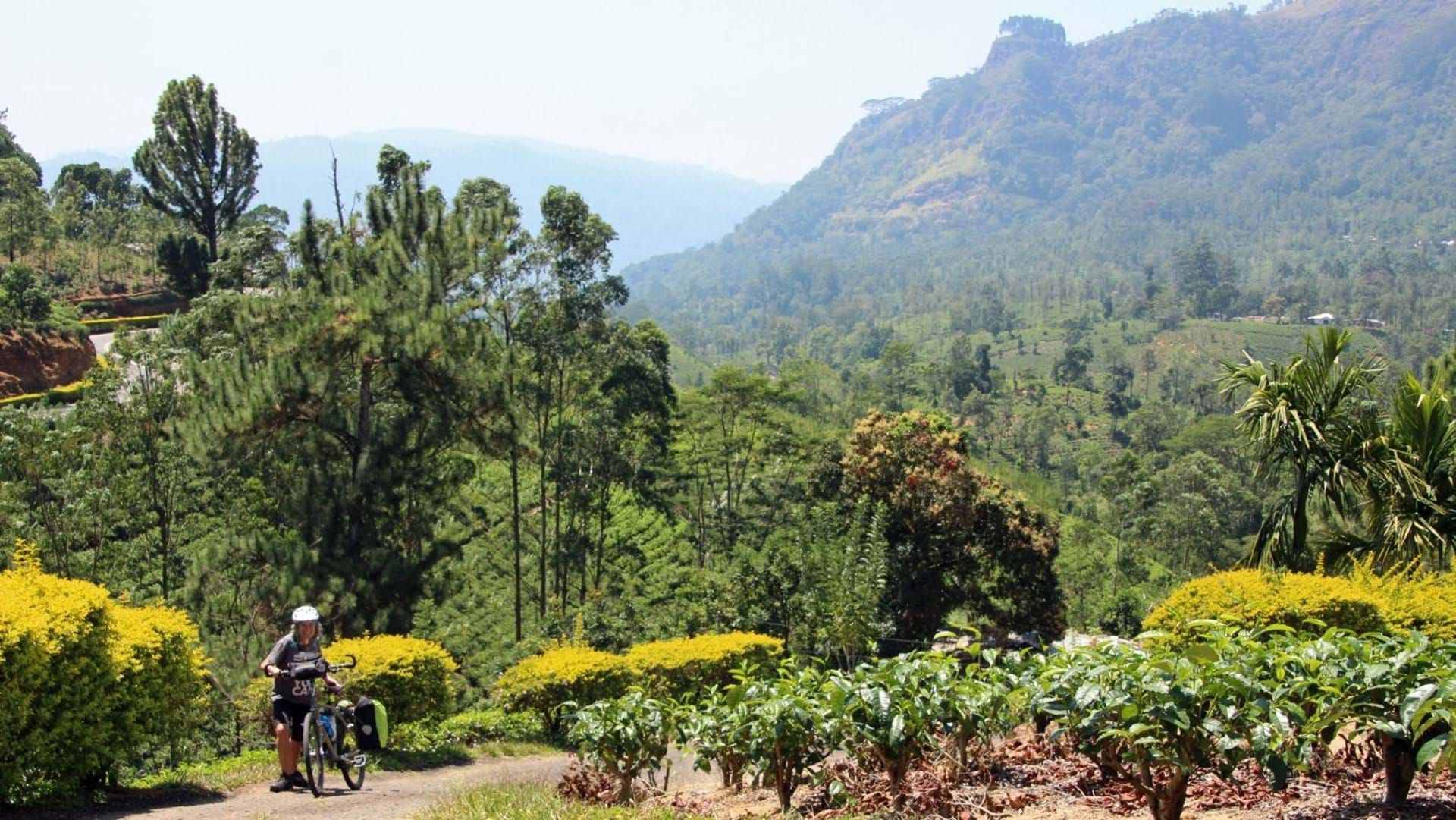
What was the terrain like?
Both: This was a real holiday – Just 2,000 kilometres within two months. The cycling and landscapes are quite varied for such a small country. But it was mostly flat, with only 9,000 metres of climbing. Most of the climbs are in the centre of the island, the beautiful highlands, worth every drop of sweat!
Just as important as the terrain is the question of traffic and roads. We only experienced heavy traffic on a few occasions. Even on the main ‘A’ roads, traffic proved light and slow. Indeed, some ‘main’ roads were completely empty.
The minor roads, which we favoured, are very quiet – with tuk tuks and motorcycles making up the vast bulk of the traffic. The majority of our route was on sealed roads – although, sometimes, the surface of these was so degraded that we kept to the gravel at the side.
What would you say the highlights were of cycling in Sri Lanka?
Both: Wow, there were so many. Perhaps …
• On many occasions, it felt like a Disney ride! Winding along minor roads, rolling through the foothills along palm-fringed roads and picturesque villages. The birdlife was astounding and butterflies like confetti. Everyone smiling, waving and calling greetings or encouragement as we pedalled past.
• Meandering through the tea plantations and monkey-filled forests of the highlands is a wonderful experience, with sweeping vistas across green, terraced valleys.
• Enjoying the flat, fast cycling along the east coast – Setting off at sunrise with the dramatic orange sun revealing a watery landscape of paddies full of birdlife and buffalo. Workers out clearing the dykes with hoes, their bikes abandoned at the roadside.
• Bumping along minor, sometimes unsurfaced and sandy coast roads, through small villages and fishing communities, with golden, palm-fringed beaches and the Indian Ocean at the roadside.
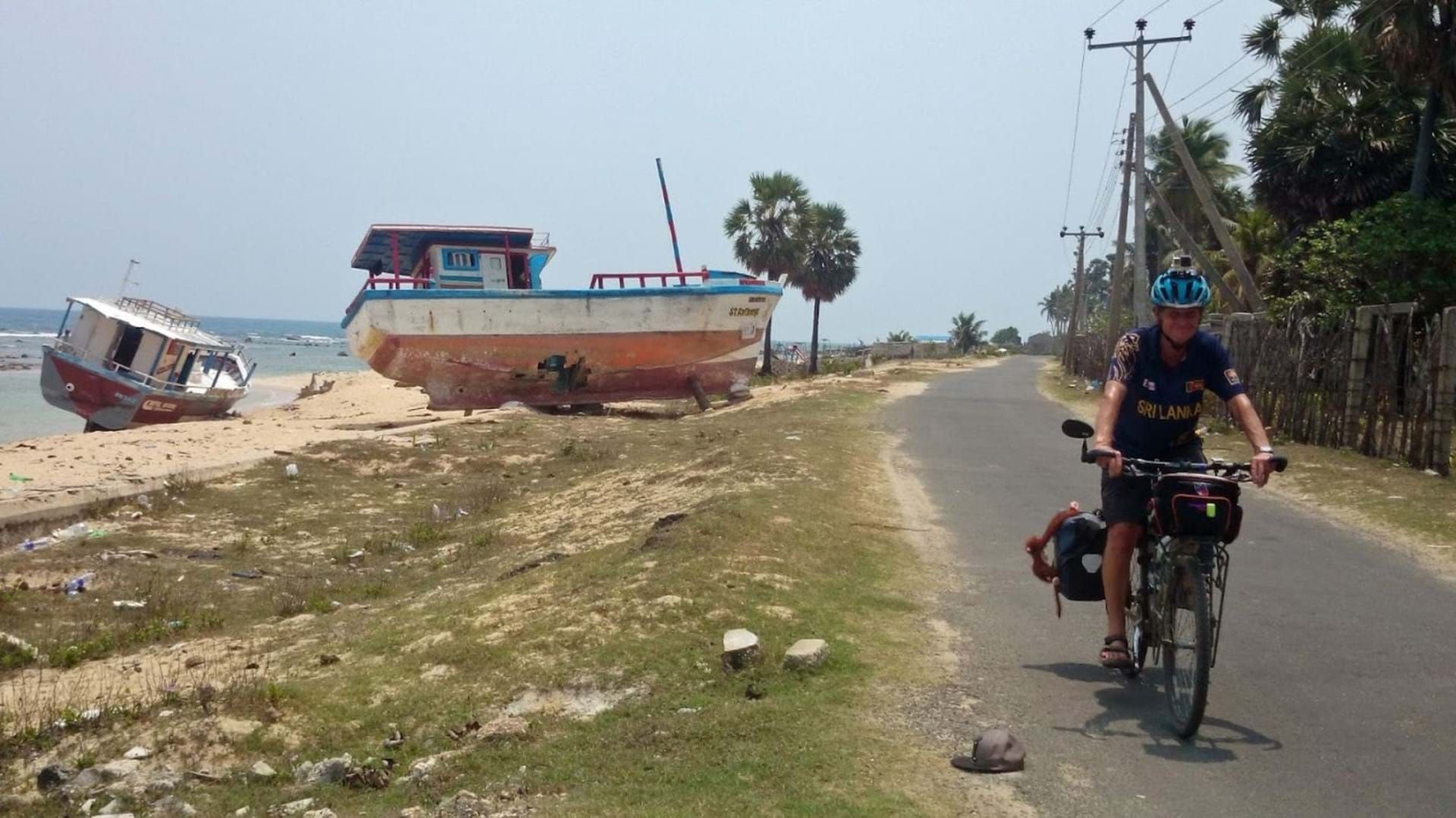
What was the culture like?
Both: This is Asia and Sri Lanka is a tear drop hanging below that vibrant colourful, extravagantly exotic, life-teeming sub-continent of India!
Consequently, Sri Lanka is rarely quiet. We usually woke to a right hullabaloo. The honks of sea eagles, the screeches of kingfishers, the haunting jungle call of the coucals and the song of hundreds of other birds always welcome. To this, add the ‘call to prayer’ – Muslim, Hindu, Buddhist and Christian were all equally as cacophonous.
5am was our usual rise time, but with this hullabaloo, it was doubtful that we could have slept longer anyway! We just love the culture of this part of the world. The vibrancy of life in this corner of the globe just beckons you to leap out of bed and go explore!
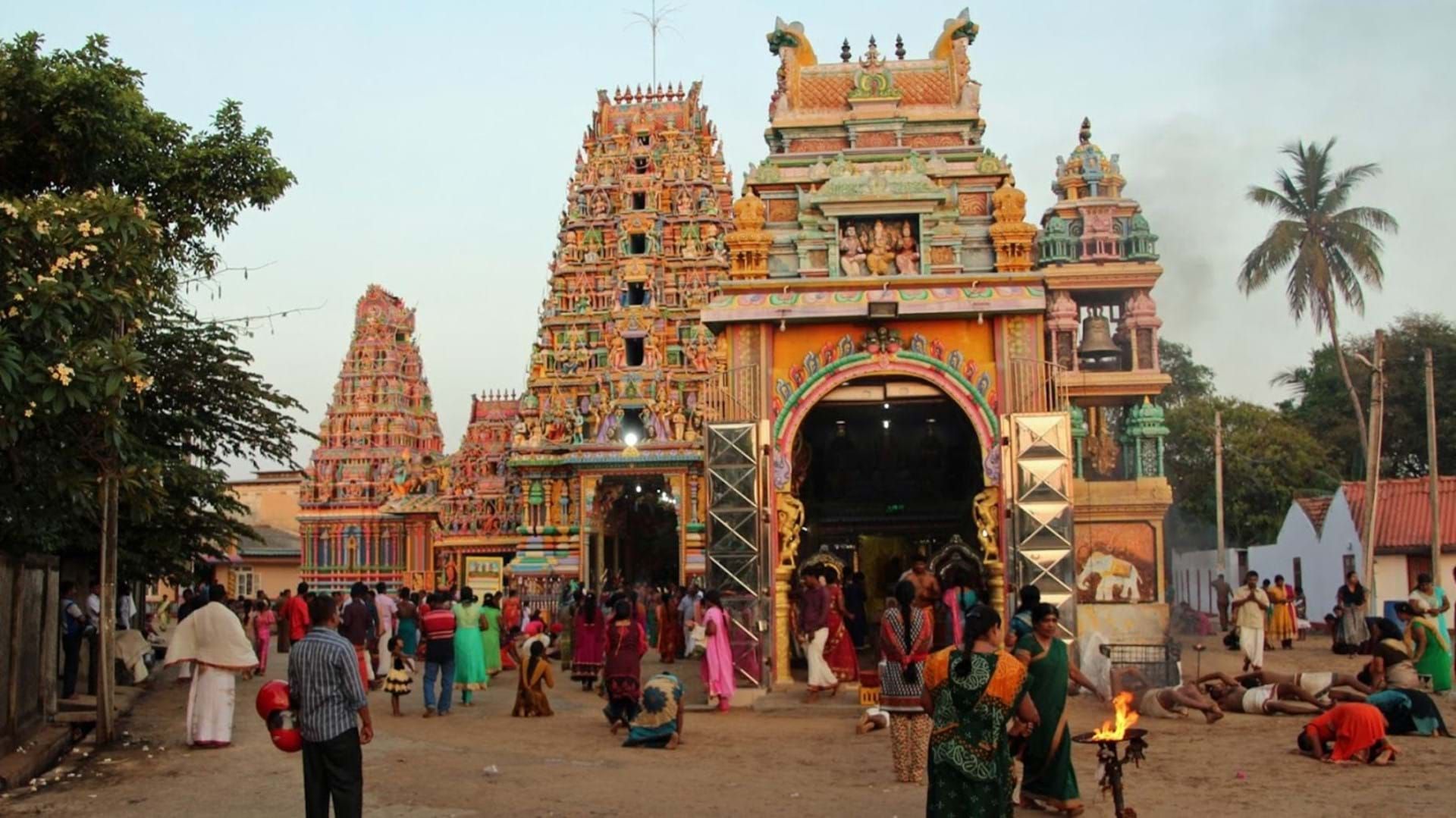
Tell us about the wildlife!
Both: It was the wildlife encounters that made our Sri Lankan cycle tour special. Going on a safari is one thing and undoubtedly, you get to see lots from a comfortable Jeep with a guide. Indeed, we enjoyed such a ‘safari’ through Udawalawi National Park. But the treasured wildlife encounters are those unexpected events stumbled upon while cycling through this island. Just to mention a few of the many:
• Witnessing a long, drawn out battle between two Indian Rollers (a beautiful species of bird).
• Watching herons and egrets skilfully avoiding the jaws of a huge crocodile after his breakfast in a creek just by the roadside.
• Finding the road ahead almost entirely blocked by a huge bull elephant.
• Watching nesting sea eagles, and the aerial combat between these same eagles and Brahminy kites.
• Being amused by the antics of boisterous monkeys from our lodge balconies!
• Praying for a monitor lizard trying to cross a busy road.
• Pausing on a cycle to watch a colony of fruit bats.
It seemed that every day, we witnessed some wildlife spectacle. Sri Lanka has a very high count of Asian elephants. It is believed that there are over 4,000 elephants spread over many areas of the island, with over 2,500 being in protected areas.
We experienced a nervous excitement cycling past signs cautioning against these elephants or leopards and crocodiles. On one occasion, we even passed a large hoarding at the side of the road that advertised “Hi Tec Elephant Repellents”!
The wildlife and particularly, the birdlife in Sri Lanka is truly astounding – the variety, the colours and the sounds are amazing.
Could you please give some top tips for people thinking of cycling in Sri Lanka?
Both: Well, from the top of our heads:
• Don’t hurry – take time to stop, stare, absorb.
• Remember your binoculars!
• Eat local – don’t be tempted with the pizzas etc. Dosas, samosas, hoppers and curries are the way to go.
• Don’t forget sun screen!
• Pack light – we are generally ‘minimalist packers’ but always find we have too much. It is hot. If it rains, so what?! You won’t get cold and stuff dries so quickly when the sun comes out.
• Learn a few Sinhalese/tamil phrases – hello, good-bye, thank you etc.
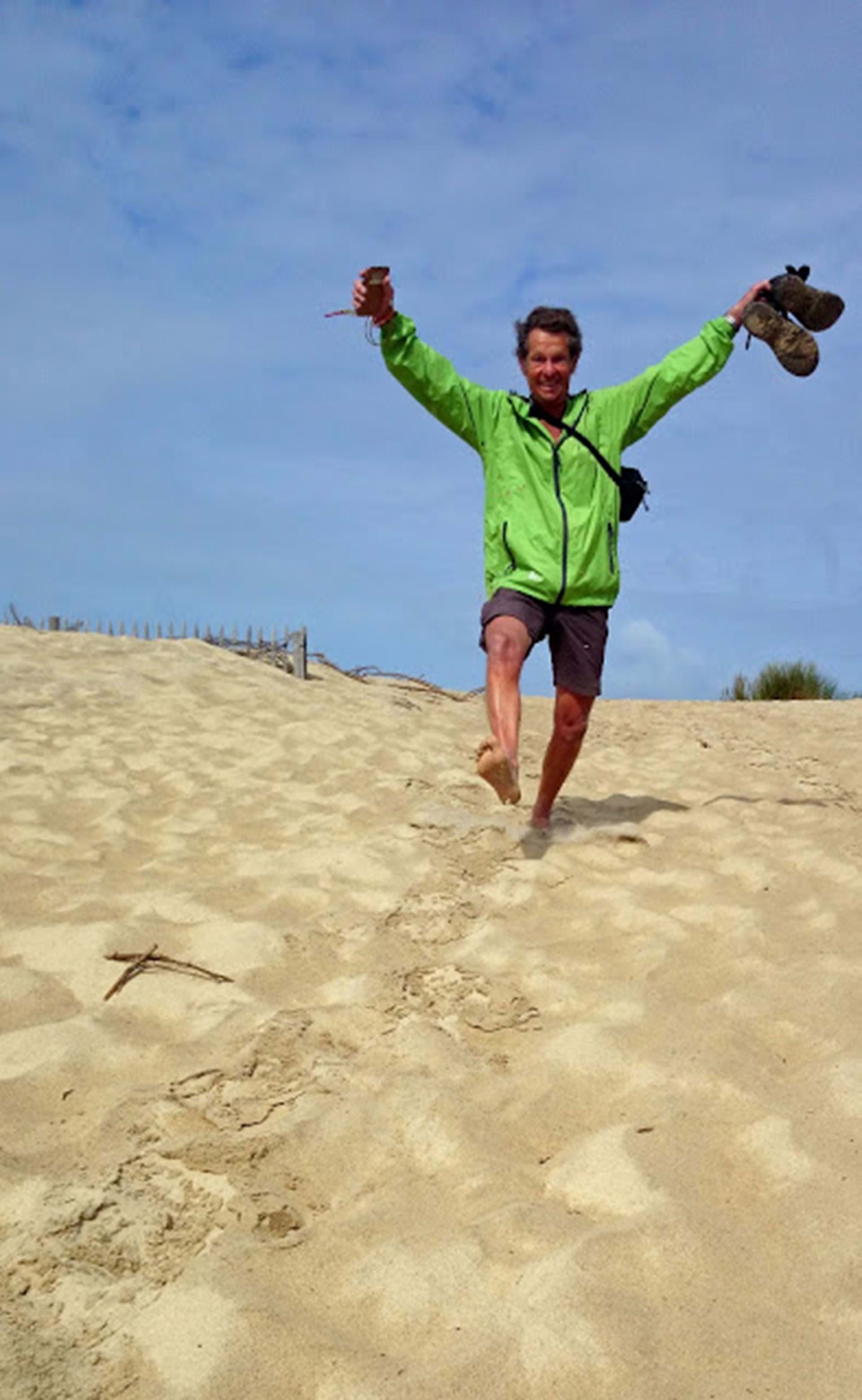
Overall, how has your experience been of cycling in all these different places as a couple?
Both: Overall? Almost invariably, our experiences have been wonderful. The highlights are too numerous and too diverse to distil here. Perhaps it is sufficient to point out that we just can’t wait to be able to hop onto our saddles and journey into far-flung destinations again.
Do you have any advice for couples thinking of taking on a challenge together?
Both: Yes – DO IT and share the adventure together.
Cycle Challenges
Get the Dream Challenges email newsletters
Be the first to know when we launch exciting new challenges and hear more about each of the awesome adventures you can join and sign up to our mailing list!
We’ll send you all sorts of fun stuff, including interviews with our local agents, top tips, case studies, videos and more – view our privacy policy for details.


